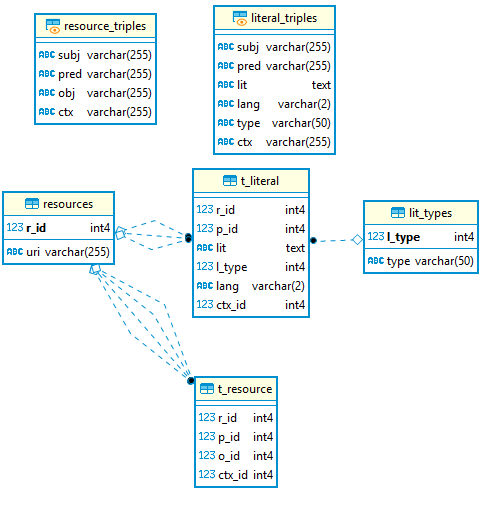Extremely naive harvester. The key element is the PostGresql database that manages resources in such a way that unique URI are kept in a seperate tables and only a reference (id) refers to it.
Unique resources are stored in the resources table and given a unique id.
Statements which the object are stored in t_resource and is therefore just a collections of id (subject,predicate,object,context).
Statements which the object is a literal are kept in t_literal and stores different aspect of the literal : it's value, its type and its language.
The literal types are managed in lit_type, only the id of that type is stored in t_literal
Two views: resource_triples and literal_triples merge back the resources ids and their values.
Those views are also used to insert triples. The views have INSTEAD OF triggers that does the house keeping of create a new resources if it does not already exists in resources table. The trigger on literal_triplesalso takes care of this job for literal types - if any. NULL type is just a string.
main.py shows a simple example of inserting triples into the database
To run this example, you must set an environment GSIP_HARV_CON_STR variable with the connection string (eg: host=localhost dbname=gsip user=gsip password=S3kret)
- activate your virtualenv: . venv/bin/activate
- run: pip install -r requirements.txt
- run: python app.py
- navigate to: http://127.0.0.1:8000/
